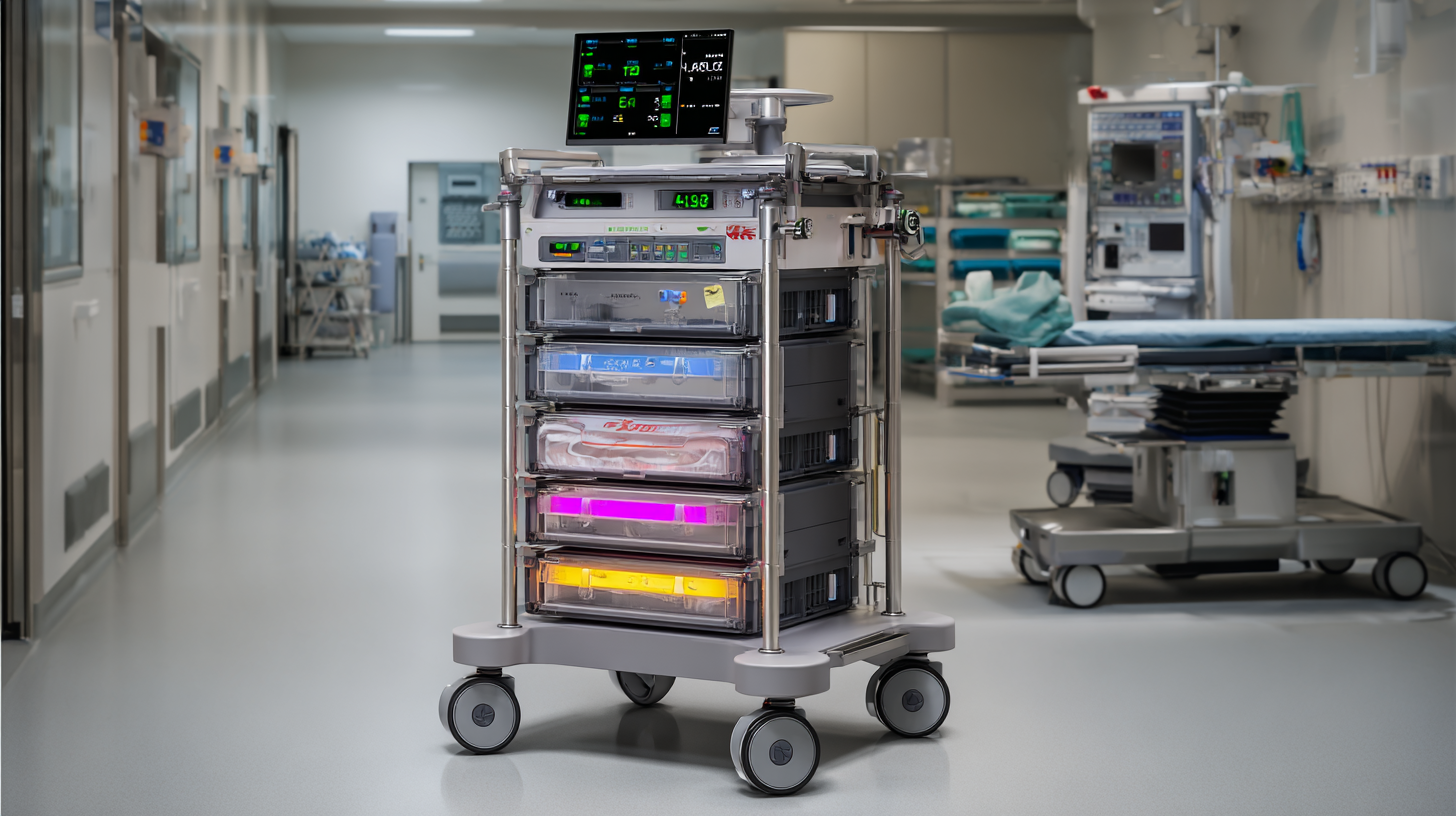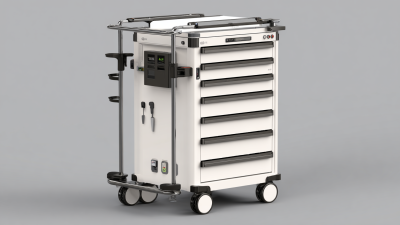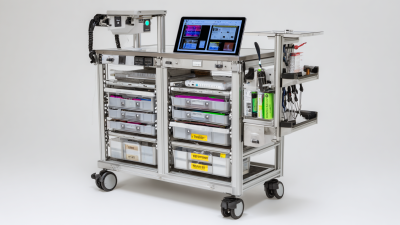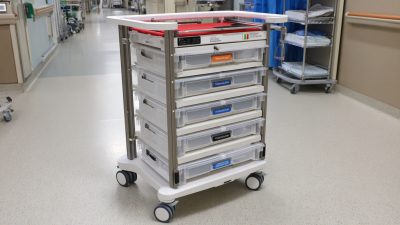Essential Features of a Surgical Trolley: Enhancing Efficiency in Modern Operating Rooms
In the dynamic environment of modern operating rooms, the efficient organization and accessibility of surgical instruments and supplies are critical for successful surgical outcomes. The surgical trolley emerges as a vital component in this intricate setup, designed to streamline workflows and enhance the overall performance of surgical teams. This essential tool not only facilitates quick access to necessary items during procedures but also helps reduce the risk of infection by maintaining a designated, controlled area for instruments.

By integrating advanced features such as modular designs, adjustable shelves, and effective storage solutions, surgical trolleys are evolving to meet the demands of contemporary surgical practices. This article explores the indispensable aspects of surgical trolleys, illustrating how their thoughtful design and functionality can significantly elevate efficiency in operating rooms, ultimately contributing to improved patient care and surgical success.
Key Characteristics that Define a Versatile Surgical Trolley
A versatile surgical trolley is an essential component in modern operating rooms, designed to enhance efficiency and streamline surgical processes. Key characteristics defining an effective surgical trolley include mobility, adaptability, and storage capacity. According to a report from the Global Healthcare Mobility Solutions Market, the demand for mobile surgical equipment has increased by 23% annually, underscoring the need for trolleys that can seamlessly move between different sections of the operating room. Robust wheels that facilitate smooth navigation and a lightweight design ensure that surgical teams can quickly reposition instruments as needed, minimizing downtime during procedures.
Additionally, the design of surgical trolleys must accommodate a variety of instruments and supplies, which can vary significantly between different surgical disciplines. The Journal of Surgical Research highlights that trolleys with modular storage options significantly reduce the time spent searching for tools, leading to an estimated 15% increase in overall surgical efficiency. Trolleys equipped with adjustable shelving and lockable drawers allow for easy organization and access to essential items, ultimately supporting the team in maintaining a sterile environment while enhancing the workflow. These features not only promote safety and organization but also contribute to an improved overall surgical experience for both medical professionals and patients.
Essential Features of a Surgical Trolley: Enhancing Efficiency in Modern Operating Rooms
| Feature | Description | Benefits |
|---|---|---|
| Mobility | Equipped with wheels for easy maneuverability. | Facilitates quick relocation during surgeries. |
| Storage Capacity | Multiple shelves and compartments for instruments. | Organizes tools efficiently to minimize retrieval time. |
| Durability | Constructed from high-quality materials resistant to corrosion. | Ensures a longer lifespan and safer handling. |
| Design | Ergonomic and space-efficient design. | Maximizes utility in confined operating room spaces. |
| Accessory Compatibility | Compatible with various surgical instruments and accessories. | Enhances versatility for different surgical procedures. |
| Hygiene Compliance | Easy to clean surfaces and antimicrobial coatings. | Promotes a safer surgical environment. |
Innovative Materials for Enhanced Durability and Hygiene in Surgical Trolleys
In modern operating rooms, the choice of materials for surgical trolleys plays a critical role in enhancing both durability and hygiene. Innovative materials such as antimicrobial plastics and stainless steel are increasingly being employed to create surgical trolleys that can withstand the rigorous demands of a hospital environment. Antimicrobial plastics help in reducing the spread of infections by inhibiting bacterial growth on surfaces, while stainless steel, known for its strength and resistance to corrosion, ensures that the trolley can endure the wear and tear of daily use.

Moreover, the integration of advanced coatings and finishes further amplifies the hygienic properties of surgical trolleys. For instance, specialized coatings can provide additional protection against chemical agents used in cleaning and sterilization processes. These innovations not only prolong the lifespan of surgical trolleys but also contribute to a safer operating environment by minimizing contamination risks. As hospitals continue to prioritize patient safety and operational efficiency, the role of modern materials in the design and functionality of surgical trolleys cannot be overstated.
The Importance of Mobility and Maneuverability in Operating Room Efficiency
In modern operating rooms, the emphasis on mobility and maneuverability is crucial for enhancing overall efficiency. Surgical trolleys play a vital role in this respect, as they are designed to transport essential instruments and supplies swiftly and smoothly. The ability to navigate around a busy surgical suite can significantly reduce downtime between procedures, allowing for a more streamlined workflow. The lightweight construction and strategic wheel placement of these trolleys enable surgical teams to reposition them quickly, accommodating the dynamic nature of operating environments.
Moreover, the design of surgical trolleys often incorporates features that enhance their maneuverability. For instance, swivel wheels allow for sharp turns and easy navigation through tight spaces, which is particularly beneficial in multi-operatory settings where quick access to equipment is necessary. Additionally, the height-adjustable features support ergonomic use, ensuring that surgical staff can operate efficiently without straining during critical moments. In this context, the integration of mobility-focused designs in surgical trolleys not only bolsters operational efficiency but also contributes to better patient outcomes by minimizing delays and enhancing the responsiveness of surgical teams.
Ergonomic Design Features to Support Surgeons and Surgical Teams
In modern operating rooms, the ergonomic design features of surgical trolleys play a crucial role in enhancing the efficiency and comfort of surgical teams. According to a report by the American Society of Anesthesiologists, more than 60% of surgical team members experience physical discomfort due to poorly designed equipment. Therefore, trolleys that promote proper posture and ease of access can significantly reduce fatigue and improve overall workflow during procedures.
Key ergonomic elements include adjustable heights, which allow surgeons and nurses to customize the trolley's position based on their individual needs. A study published in the Journal of Healthcare Engineering highlighted that implementing adjustable equipment can decrease the incidence of musculoskeletal disorders by up to 30%. Moreover, features like lightweight materials and intuitive design ensure that surgical instruments can be repositioned quickly without unnecessary strain, ultimately leading to better concentration and improved patient outcomes.
The integration of these ergonomic designs not only supports the physical well-being of surgical teams but also enhances the speed and accuracy of surgical procedures. As operating rooms continue to evolve, the emphasis on ergonomic solutions in surgical trolleys will be pivotal in addressing the demands of complex surgeries and improving the overall efficiency of surgical operations.
Essential Features of a Surgical Trolley: Enhancing Efficiency in Modern Operating Rooms
Integration of Technology: Smart Surgical Trolleys for Better Workflow Management
In the realm of modern operating rooms, the integration of technology into surgical trolleys has become a crucial element in enhancing workflow management. Smart surgical trolleys offer features like real-time data tracking, inventory management, and seamless connectivity with medical devices. According to a recent report, the adoption of technological solutions within surgical environments can lead to a 20% increase in efficiency and a significant reduction in the time surgical teams spend searching for equipment, thereby minimizing downtime during procedures.

To optimize the use of smart surgical trolleys, consider implementing these tips: First, ensure that the trolleys are equipped with RFID tracking systems for easy location of tools and supplies. This not only saves time but also helps in maintaining an accurate inventory. Secondly, invest in training for your surgical team on using these advanced tools effectively to exploit their full potential. As reported in a life cycle assessment study, the healthcare sector's push towards sustainability requires such innovations to monitor and possibly reduce the carbon footprint of surgical procedures, with minimally invasive techniques being a critical focus area.
Additionally, incorporating mobile charging stations and secure digital displays on surgical trolleys can further streamline workflow by keeping essential devices charged and accessible. Leveraging these smart solutions not only enhances operational efficiency but also aligns with the growing demand for environmentally responsible practices in healthcare.
Related Posts
-

Exceptional Manufacturing from China's Leading Factory for Best Mobile Medical Carts
-

How to Choose the Right Medical Laptop Cart for Enhanced Workflow Efficiency in Healthcare Facilities
-

7 Essential Advantages of Choosing the Best Med Carts for Sale
-

Exploring Isolation Cart Alternatives Through Industry Innovations and Best Practices
-

Ultimate Guide to Choosing the Best Medical Computer Cart for Your Facility
-

7 Essential Tips to Enhance Efficiency with Medical Carts on Wheels for Healthcare Facilities
